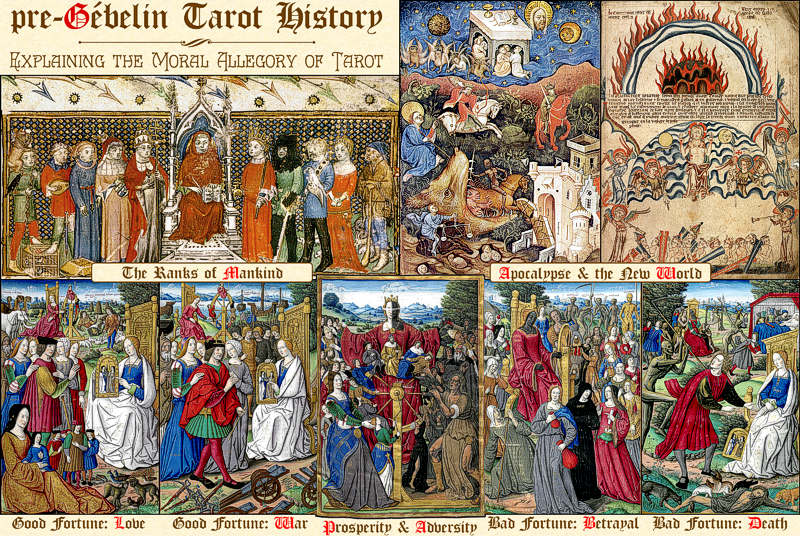
Tarot cards... are now almost commonplace. [This fact] does not reflect any significant move towards the playing of Tarot games in countries which lack that tradition. Which is rather ironic, when you consider that Tarots were originally invented for playing games with, (their occultic and fortune-telling functions date from the late eighteenth century), and that, having now been played for over 500 years, Tarot is still the everyday card game for thousands, perhaps millions, of European players."
(David Parlett, The Oxford Guide to Card Games, 1990.)
"Tarot" refers to a large family of card games played with an augmented deck, (that is, decks with a fifth "suit" serving as permanent trumps), and also to the decks themselves. Other card games using trumps select one of the four regular suits to serve as trumps for a particular hand, but at the time Tarot was invented the idea of trumps was also being invented. (At least four different ideas for trumps were experimented with during the 15th century.) Tarot is commonly played in various areas of Europe, and has been played in Italy since the 1440s. "Tarot" also refers to similar decks that are used for fortune-telling and other esoteric purposes. In English-speaking countries this is the only common use of Tarot cards, even though such use didn't begin until roughly 350 years after their invention.
In 1770 a fortune-teller calling himself Etteilla wrote the first book on cartomancy, and mentioned that Tarot could also be used for this practice. In 1781, the learned bullshit artist (gentleman essayist and naive philologist, if you prefer) Antoine Court de Gébelin published a pair of absurd false histories for the deck along with a number of equally silly interpretations. pre-Gébelin will be concerned with what Tarot was before it was co-opted by French fortune-tellers and Freemasons, about Tarot history pre-Gébelin.



No comments:
Post a Comment